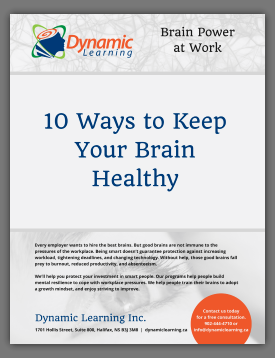I have been listening on CBC to people calling in to talk about their experiences with tornadoes and other frightening weather events. Those who had experienced such an event some years ago said that ever since then, the sound of high winds or heavy rains would cause a surge of adrenalin in their bodies, raising their heart rates. But they were no longer terrified by these sounds, they just disliked them. This is a clear example of the difference between emotions and feelings.
An emotion is the physical reaction in your body to an external or internal change. For example, the sound of a loud bang could momentarily increase your heart rate.
A feeling is your mental interpretation of what is going on in your body, triggered by the emotion. You might perceive the increased heart rate from the loud bang as joy because it means that a family member you have been waiting for has just arrived and has banged the car door. Or you might perceive it as disappointment because someone you have been arguing with has just left the room, banging the door.
Emotions are our instinctive, physical response to a change often triggered by structures deep in the brain like the amygdala. They alter your physical state, e.g. increased heart rate, sweating, tense muscles, nausea.
Feelings are developed in our cortex, the more highly evolved surface covering of the brain and depend on what we perceive the emotions – the physical changes – to mean. These feelings are not only influenced by what is happening in the moment but are also subject to our sub-conscious beliefs, memories, and personal experiences.
Because of our evolutionary heritage, most of us would first interpret a loud bang as negative. However, those who had lived in a war zone would be much more likely to immediately feel frightened. Whereas those of us who have lived in a peaceful part of the world would be more likely to feel curious.
Although the words emotions and feelings are often used interchangeably, I think it is very helpful to recognize the difference between them, so that we can work more effectively with our emotions.
When we sense an emotion, we can pause to engage our thinking so that we can respond to the emotion, and make sense of it as it relates to what is happening in the moment, rather than reacting automatically based on habit and prior experience.
By living more in the present, you can move from being emotionally reactive to consciously responsive. You can more deliberately choose how you will interpret an emotion. As you work with your emotions more intelligently, you will be less anxious or angry, and more often able to maintain your balance, peace, purpose, and hope. You are more likely to be able to move toward your goals, with less stress and more joy.
Someone who has experienced a tornado, who knows that loud rain and wind cause a certain emotional reaction in their bodies, can choose to feel dislike rather than terror. Similarly, you can pause when you feel an emotion and take a few seconds to decide what it means.
Since I read about this distinction between emotions and feelings in the book Beat Depression and Anxiety by Changing Your Brain by Debbie Hampton, I have been paying more deliberate attention to how I interpret my emotions as I become aware of them. And I find it helps me to feel calmer and more in control of my life.


